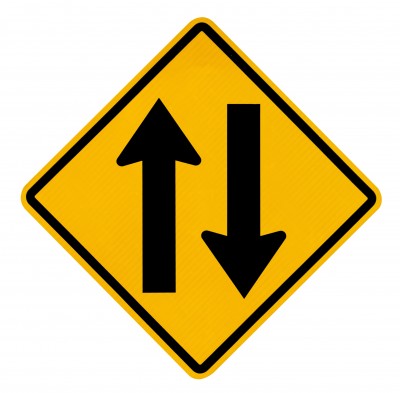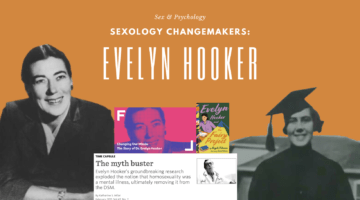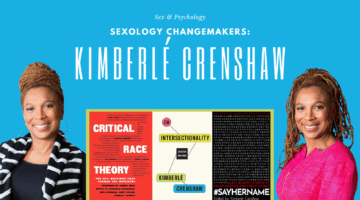Are Women Really More Likely To Be Bisexual Than Men?
July 30, 2012 by Justin Lehmiller
I recently posted an article in which I concluded that “while it is indeed possible for both men and women to be bisexual, evidence from a variety of sources suggests that bisexuality may be a more common occurrence among women than men” (see here for the complete article). I received a couple of comments on the site as well as a few e-mails that were critical of this conclusion, so I thought it might be useful to do a follow-up post and dig a little deeper into the research in the hope of clearing things up.
To begin, one reader was concerned that I was simply presenting my own personal opinions on the matter; however, this was not the case. I cited three different pieces of scientific evidence supporting the notion that women have a greater tendency toward bisexuality: (1) women demonstrate genital arousal in response to a wider range of sexual targets than men, (2) a “fluid” pattern of sexuality is well documented among women but less common among men, and (3) men are much more likely to develop fetishes and have very category specific forms of sexuality than are women. I hope you can see that this is not just some idea I’ve pulled out of thin air.
Another criticism I received was that I “cherry-picked” evidence to support my conclusions and ignored research that disconfirmed it. Specifically, a study conducted by Adams, Wright, and Lohr (19961 was mentioned by a couple of readers as evidence that men have similar and perhaps greater tendencies toward bisexuality than women, given that a significant number of “heterosexual” men in that study experienced arousal in response to watching gay male porn. However, if you look closely at the Adams study, it is unclear what it says about male bisexuality. Almost all of the men in this study who showed significant arousal in response to gay porn were guys who were very homophobic in the first place. Although these guys may have identified themselves as heterosexual to the researchers, it doesn’t mean that they actually were. Perhaps these guys were simply repressing or denying their same-sex desires. This alternative explanation makes sense in light of a series of recent research studies finding that a number of homophobic men are secretly gay. Thus, it is unclear whether these men were demonstrating bisexual tendencies or if they were gay but in the closet.
The other major criticism I received was that sexuality statistics and our knowledge of human history contradict the idea that women have greater tendencies toward bisexuality than men. The specific arguments were that almost all historical examples of bisexuality dating back to the ancient Greeks and Romans are about men, and contemporary research on sexual orientation finds that female bisexuals don’t typically outnumber male bisexuals. Regarding the historical argument, I don’t dispute that there’s more past evidence of male than female bisexuality. But does that mean that bisexuality was necessarily rarer in women? No. Maybe we just don’t have as many female examples because historians were less likely to write about female sexuality. Also, societies have made a much greater effort for years to control and constrain women’s sexuality than men’s, which may further contribute to a seemingly greater number of male bisexuals.
Regarding contemporary statistics, most of the data I’ve seen supports the conclusions in my original post. For instance, if you look at all of the major nationally representative sex surveys conducted in the United States in the past decade (i.e., the National Survey of Family Growth, the National Survey of Sexual Health and Behavior, the General Social Survey, etc.), they all consistently show that a higher percentage of women identify as bisexual than men. See for yourself: check out this report from the CDC that summarizes all of the findings from all of these studies (you can find the relevant data in a table on page 32). One other really interesting thing about this report is that it consistently shows that bisexualilty is more common than homosexuality among women, whereas homosexuality is more common than bisexuality among men. This fits with the narrative from my earlier post suggesting that women’s sexuality tends to be more situation-dependent, whereas men’s sexuality is more specific to a certain category.
Overall, my take on the research in this area is that bisexuality is something that clearly exists in both men and women—I have never argued and never will argue that bisexuality only occurs in women. Men can be bisexual, and women can be bisexual. Period. There’s no debating that.
However, the science is pretty clear that bisexual tendencies seem to be more common in women than men. Does this mean that all women are inherently bisexual? No. Again, I have never argued that idea and never will. Sexuality is incredibly complex and there are few (if any) true universals that would apply to everyone in a particular gender group. The key thing to take away from this is simply that sexuality is sometimes expressed differently in men and women, and bisexuality happens to be one of those cases where there are some notable differences across the sexes.
Want to learn more about Sex and Psychology? Click here for previous articles or follow the blog on Facebook (facebook.com/psychologyofsex), Twitter (@JustinLehmiller), or Reddit (reddit.com/r/psychologyofsex) to receive updates.
Adams, H. E., Wright, L. W., & Lohr, B. A., (1996). Is homophobia associated with homosexual arousal? Journal of Abnormal Psychology, 105, 440-445.
Chandra, A., Mosher, W. D., & Copen, C. (2011). Sexual behavior, sexual attraction, and sexual identity in the United States: Data from the 2006-2008 National Survey of Family Growth. National Health Statistics Reports, 36, 1-36.
Image Source: 123rf.com
You Might Also Like:

Dr. Justin Lehmiller
Founder & Owner of Sex and PsychologyDr. Justin Lehmiller is a social psychologist and Research Fellow at The Kinsey Institute. He runs the Sex and Psychology blog and podcast and is author of the popular book Tell Me What You Want. Dr. Lehmiller is an award-winning educator, and a prolific researcher who has published more than 50 academic works.
Read full bio >


